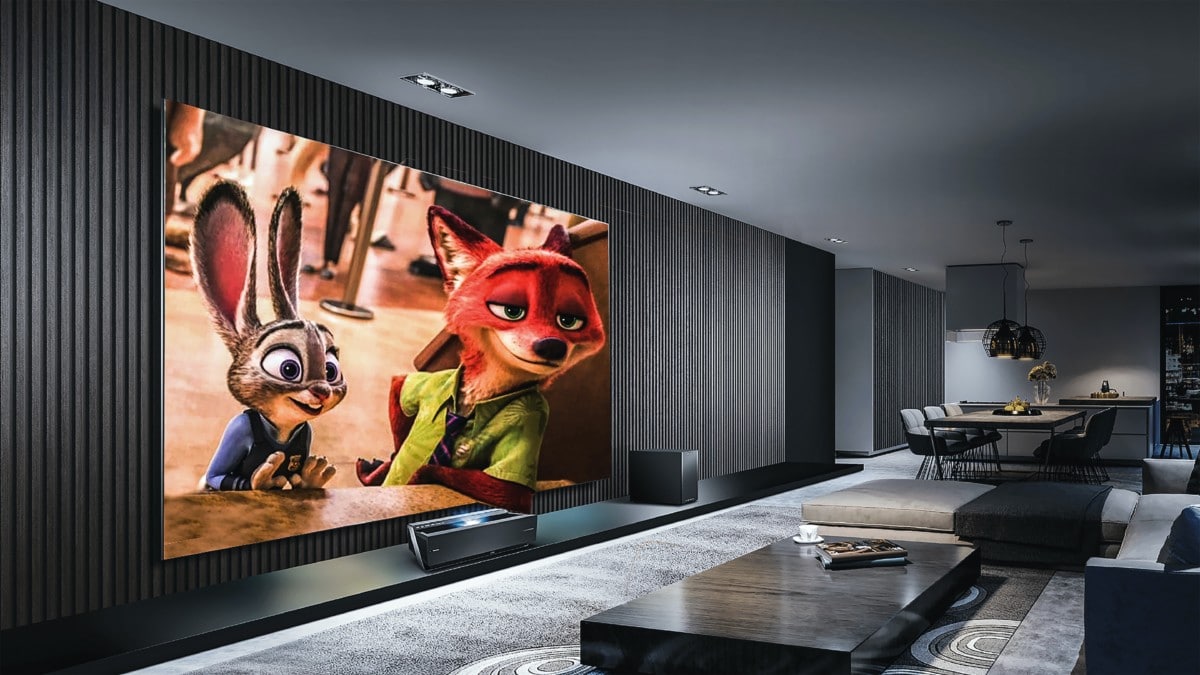With theaters closed across the nation and streaming services rising in popularity more rapidly than ever, cinema fans are spending less time in ticket lines and more time upgrading their current entertainment space into a state-of-the-art home theater. While it seems as simple as going to the store and buying the biggest TV with the highest quality display and calling it good, many have found that it takes careful consideration to replicate an authentic cinema-like experience. Factors such as lighting, audio, acoustics and comfort all play a substantial part in creating the ultimate home theater. That’s why we’ve reached out to the experts in home theater systems from New York to Austin to provide you with some tips for creating an authentic cinematic experience at home. So sit back, grab some popcorn and learn how to create the home theater of your dreams.

Invest in quality equipment
When it comes to the ultimate home theater, the screen and projector can make or break the experience. Home theater projectors need to have at least a 500,000:1 contrast ratio to make the “dark scenes” truly dark and suspenseful. Otherwise, the blacks will appear grayer, than truly dark. In addition, silver or gray screens help increase the contrast ratio, while still providing a bright and colorful image. If you like scary movies, this tip is for you! – Go Outdoor Movies
Try to replicate the real thing
To build the home theater of your dreams, it should be as close to reality as possible. Recreating the movie experience as intended. At Bang & Olufsen, we strive to recreate the experience as the Director intended for the audience to have a true, life-like adventure; nothing more, nothing less. – Adam Rejino, Manager at Bang & Olufsen SOCO
Ensure your screen supports your projector’s resolution
Ensure that the screen you pair with your projector actually supports the projector’s resolution. There is a lot of bad information and false claims out there about a projector screen being “4K Ready” or “4K Compatible”, but that does not mean that it will actually resolve 4K. A screen surface needs to be texture-free in order to not distort the geometry of a 4K pixel (which is 4x smaller than a 1080p pixel) and ensure that you get the full fidelity from your projector. – ProjectorScreen.com

Take advantage of integrated smart home tech
Homeowners going beyond the ‘norm’ and pushing the boundaries of the home-cinema space have started using integrated smart home technologies. By connecting all in-home devices such as speakers, projectors, televisions, LED lighting, and security systems over an encrypted network to an intelligent control system, the user gains the ability to see the advanced functionality of the home. The possibilities in this space are limitless. Imagine pretty much anything you would want to do is activated via voice or wall-mounted touch screen. Specifically, in the home cinema space, we’ve seen this integrated tech being used for :
- Voice-activated lighting control
- Zoom enabled cinema rooms
- Augmented reality and reactive video programs
- Advanced sound space control
- Voice-activated audio presets
While no amount of tech in a home cinema is a replacement for a grand design, homeowners looking to push the limits are having these networked smart systems installed in their cinemas and their entire homes. – Limitless Sights and Sounds
Incorporate sound-absorbing materials
What would a cinema be without the curtains getting pulled away from the screen? Use heavy drapery textiles covering the screen when you are not watching a movie, and let the draped curtains move from your screen to the sides when viewing. The sound-absorbing draped curtains will help to improve the sound quality tremendously in your home theater. Still too sharp sound and/or sound waves that are bouncing around? In addition to the curtains, we would recommend adding some sound-absorbing wall tiles, panels, ceiling tiles or a rug. – Unika Vaev
Make your smaller home theater sound like a larger room through the use of our absorption and diffusion technologies. You can have a low – frequency definition equal to your voice and music using our proprietary carbon and foam technologies. Your voice will stay on-screen following the action and your music will fill your room for all to hear. – Acoustic Fields
Take acoustics into consideration
Your typical movie theater has given a lot of thought to acoustics, from the shape of the room to the material that covers the walls But you don’t need to be a sound engineer or have a huge budget to maximize the acoustic performance of your home theater. To cut down on soundwave reflections (which can cause unwanted echoes) cover any large flat, hard surfaces between your speakers and your ears. If you have a hardwood or tile floor, cover as much of it as possible with a fluffy rug, and consider swapping the glass coffee table for a soft ottoman. And cover any bare windows with heavy drapes—which brings the added benefit of improving your TV’s picture. – Abt Electronics
Do not forget to consider acoustic treatment when planning your home theater project as the best speakers on the market can sound horrific in a room that is not properly treated. Multiple sound sources (speakers) produce a lot of sound energy especially when combined with subwoofers, and many home theaters are in small rooms with lengths and widths less than 30 ft which can be problematic if untreated. Each sound source and corresponding surface needs to be accounted for and treated with proper absorption or diffusion. The most critical areas to treat are the first reflection points in order to eliminate noticeable echoes and the corners of the room where low-end bass waves tend to congregate and cause problems. – Sound Assured

Don’t underestimate the power of quality audio cables
When building a HiFi or home theater systems, homeowners often overlook quality audio cables. Cables are the link that ties your system together, ensuring that each of your thoughtfully purchased components is performing to their maximum potential. However, the most important cable of them all is the power cord. Poor quality power cords are often the limiting factors in a system, polluting it with noise introducing electromagnetic interference (EMI) and radio frequencies (RF). A high quality, optimally built power cord, on the other hand, is designed to be less prone to (and even reduce) noise, resulting in an automatic upgrade to any A/V system—a must-have in all systems! – Nordost Cables
Choose ambient light rejection materials for your ceiling
When it comes to creating your ideal home theater, Elite Screens recommends using one of their popular Ceiling Ambient Light Rejecting Materials such as the CineGrey 3D/5D in a dedicated home theater environment for the following reasons:
1) Angular reflective material does not scatter light in the room
2) Improves black levels and color purity for an enhanced contrast image
3) Ambient Light Rejecting Technology absorbs/reflects light
4) ISF Certified material provides accurate color reproduction – Elite Screens

Invest in the right seating for you
Look for features in home theater seats that are focused on total comfort, such as powered headrests and lumbar. Your neck and back will thank you after hours of binge-watching. Attachable accessories that wirelessly charge your QI-enabled phone on the armrest or cradle a glass of your favorite wine are common additions to our customers’ home theater seats. – 4Seating
Consult with a professional
If you are serious about either creating a new home theater or converting a room, get the advice of a professional home theater installer. Most all will do a free home evaluation, and will work with your budget and will spot issues that you might not be taking into account. The best fit is one who asks you about how you are going to be using the space (movies, TV, gaming, combination) and your viewing/listening habits. – Wicked Home Theater

 United States
United States Canada
Canada